“My only ambition has been to engrave my name at the feet of great men and in the service of grand ideas.” —Frédéric Auguste Bartholdi
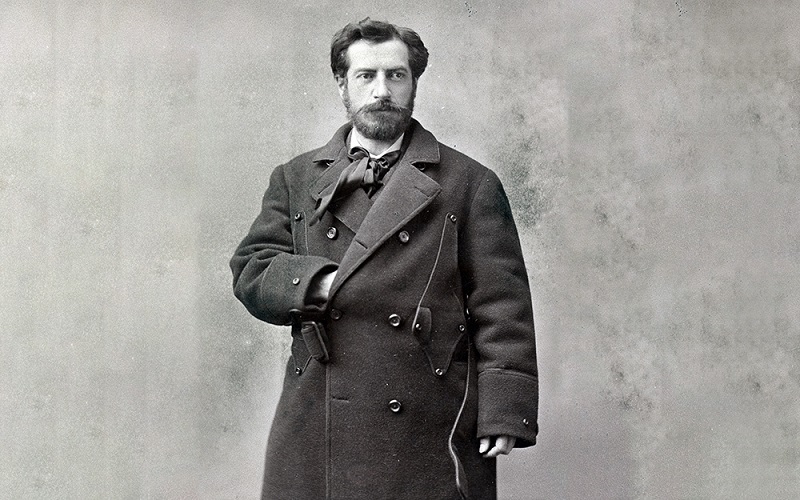
Frédéric Auguste Bartholdi in 1880.
Most monographs about Frédéric Auguste Bartholdi conclude his story with the 1886 unveiling ceremony for his Statue of Liberty in New York Harbor. A lesser-known chapter in the French sculptor’s life involves his next and final trip to the United States in 1893, a six-week visit from September 2 through October 14. While he came to the U.S. ostensibly to see the World’s Columbian Exposition, Bartholdi spent much of his time and energy proposing changes to his colossus standing in New York Harbor and trying to find a buyer for a statuary group being exhibited at the World’s Fair in Chicago.
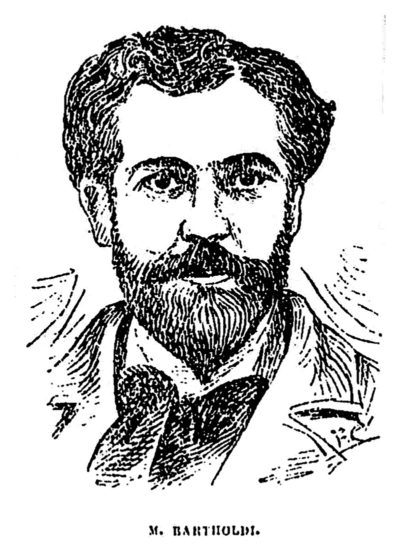
Auguste Bartholdi returned to the United States for his sixth and final visit in 1893. [Image from the New York World Sept. 4, 1893.]
“Incomprehensible how all of this could have come into existence”
When he visited Chicago in the summer of 1893, Bartholdi was a household name. The city had become the unofficial capitol of the world during the six months when it hosted tens of millions of visitors in the White City on Lake Michigan. So much had changed since Bartholdi’s first visit to Chicago twenty-two years earlier.
In 1871, Bartholdi was eager to visit the United States and learn about its people. Most of all, he wanted to further his plans to erect for them a statue to commemorate and celebrate the American Revolution, a century of friendship between the U.S. and France, and the recent freeing of enslaved people. Bartholdi departed France in early June for a six-month tour of the United States. Arriving in New York Harbor after nearly two weeks at sea, he almost immediately identified Bedloe’s Island as the ideal site for his liberty statue.
“Never did the country have a more enthusiastic foreign traveler than Auguste Bartholdi,” writes one biographer.[Mercer 31] Though virtually unknown in the U.S., Bartholdi quickly formed friendships that would last a lifetime.
In New York, he met chocolatier Henri Maillard, who recently had arrived from France to set up shop. Years later, Maillard’s Chocolates would mount a most impressive display at the 1893 World’s Fair. Bartholdi also met with two prominent figures in 1871 who would become important collaborators for his liberty statue project and then become prominent designers for the 1893 World’s Columbian Exposition.
He ran into Frederick Law Olmsted in New York and proposed to design a fountain for his Central Park. Olmsted later served as the chief landscape architect for the Columbian Exposition. In Newport, Rhode Island, Bartholdi met architect Richard Morris Hunt, who would design the pedestal for his liberty statue a decade later and design the Administration Building for the Chicago Fair of 1893. Chief among the other prominent Americans Bartholdi met during his 1871 visit was President Ulysses S. Grant. From these meetings with artists and political leaders, Bartholdi learned a great deal about the American way of life.
After two months on the east coast, Bartholdi embarked on a cross-country tour by rail. Few Americans had made such a trip, as the transcontinental railroad had been completed only two years earlier. Heading west to Niagara Falls and through Detroit, he reached Chicago in August of 1871. Bartholdi recorded in his journal that the city was “more American than all the others—streets full of life, straight, wide, full of telegraph poles and wires, and manure.” [Khan 78] He was struck by the overwhelming pace of Chicago’s growth:
“The whistle of locomotives and steamers make a continuous sound like that of an Eolian harp, smoke blackens the sky; a vast population rushes about, a prey to what might be called business colic. It is incomprehensible how all of this could have come into existence in so short a time.” [Mitchell 98] We can imagine Bartholdi having the same thought when he arrived in the White City on Chicago’s South Side twenty-two years later.
During his 1871 stay in Chicago, Bartholdi visited the Chicago History Museum to see the copy of the Emancipation Proclamation donated by Abraham Lincoln. The document, the museum, and much of the city burned in the great fire just weeks after Bartholdi departed Chicago.
Bartholdi made many friends and future allies during this first visit to America in 1871 but did not manage to spark much interest in his idea for a liberty statue.
He returned to the United States in 1876 and married Jeanne-Émilie Baheux, a fellow native of France, in Providence, Rhode Island. To promote his Statue of Liberty project, the sculptor shipped the hand and torch for display at the 1876 United States Centennial Exposition in Philadelphia. Bartholdi was so pleased with the host city’s reception of his torch that for a time he considered having the full statue placed in Philadelphia rather than in New York. Later, Boston attempted to lure Lady Liberty to her shores. Bartholdi’s instigation of such inter-city rivalries for his artwork continued through the World’s Fair of 1893.
Following a visit in November of 1885, Bartholdi returned in 1886 for the unveiling of Liberty Enlightening the World in New York Harbor on October 28.
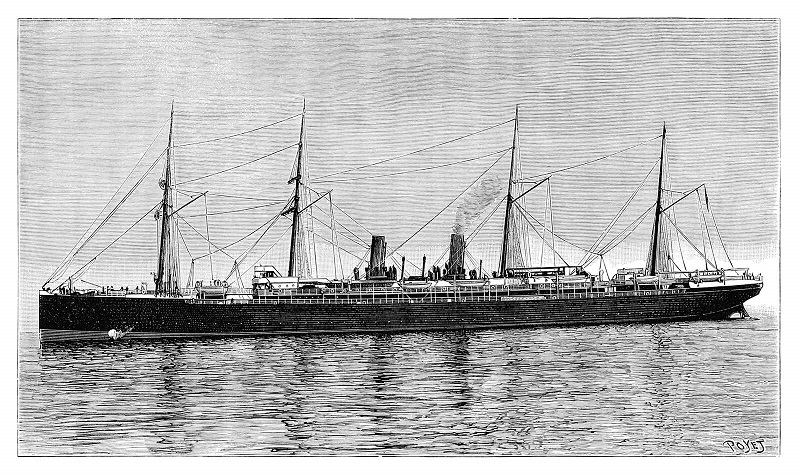
The trans-Atlantic steamer S.S. La Champagne that carried Bartholdi to America in 1893. [Image from Les Merveilles de la Science, Supplement 1 (Furne, Jouvet et Cie, n.d.)]
Seized upon the World’s Fair
The 1893 World’s Columbian Exposition drew millions of visitors to Chicago between May 1 and October 30. Walking through the throngs exploring the White City were many famous artists, architects, authors, athletes, engineers, scientists, musicians, performers, politicians, and dignitaries from across America and around the world. Alas, Frédéric Auguste Bartholdi was just another star in a constellation of notable guests visiting the 1893 Fair.
In late August 1893, Bartholdi and Jeanne-Émilie took passage from Le Havre on the French steamer La Champagne. Riding onboard were forty-seven members of the Society of Civil Engineers, also heading to the World’s Fair in Chicago. The ship arrived in New York on the evening of Saturday, September 2. While detained overnight at Quarantine, Bartholdi could view and study his Liberty Enlightening the World for the first time in seven years. Alas, very little could be seen at night.
The next morning, as the ship made its way through the Upper Bay and up the Hudson River to the Morton Street pier, he could admire the Statue of Liberty in daylight, regarding it “long and earnestly.” The French engineers on board erupted into three cheers for the sculptor as the ship passed Bedloe’s Island. A Washington D.C. paper editorialized that “doubtless he was gratified to note that Liberty is still here, and we beg to assure him that the enlightenment of the world progresses, some of the Congressional speeches to the contrary, notwithstanding.” [“Bartholdi Revisiting”]
Since his first visit to America in 1871, Bartholdi had made many friends in the U.S., and he reported that he had “seized upon the World’s Fair as a pretext for running over to see them.” [“Visitors from France”]
After checking into their room at the Hotel Martin (later renamed the Hotel Lafayette), which stood on the southeast corner of University Place and East Ninth Street in Greenwich Village, the Bartholdis enjoyed a ride through Central Park.
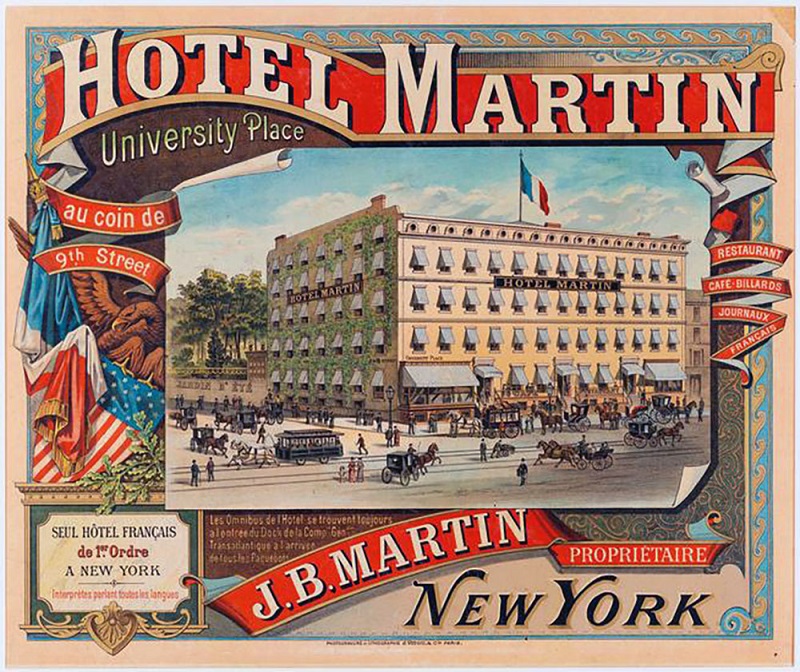
An advertisement for Hotel Martin in New York, where Bartholdi stayed during his 1893 visit. [Photogravure and lithography by J. Vitou & Cie; public domain, via Wikimedia Commons.]
To gild the goddess
Meeting the press wearing a light grey tweed suit with a cravat and red rosette in his button hole, Bartholdi presented as “a picture of the successful French artist who remains a bohemian in his freedom from conventionality in spite of material prosperity.” [“Bartholdi is Here Again”]
Bartholdi had been in recent correspondence with the Lighthouse Board in New York regarding the best way to illuminate the Statue of Liberty and prevent corrosion. He did not think their idea of painting the statue to make it more visible at night was feasible. Agreeing that it was too dark, the sculptor instead proposed to have Lady Liberty gilded from top to bottom. In addition, “gilding would preserve the statue wonderfully,” Bartholdi told reporters. [“Would Gild the Goddess”] He admitted that “of course it would be costly, but if one of your rich men would spend as much on it in proportion to his fortune as I have done, he could gild it over and over again.”[“He Thinks Miss Liberty is Too Dark”]
Given the economic calamity that had befallen the country in 1893, his brash statement may not have won over many Americans. His gilding proposal pulled Bartholdi into the national brouhaha over bimetallism. Newspapers pounced, commenting that the Frenchman would now be denounced “as a bloated foreign gold-bug” by pro-silver populists.
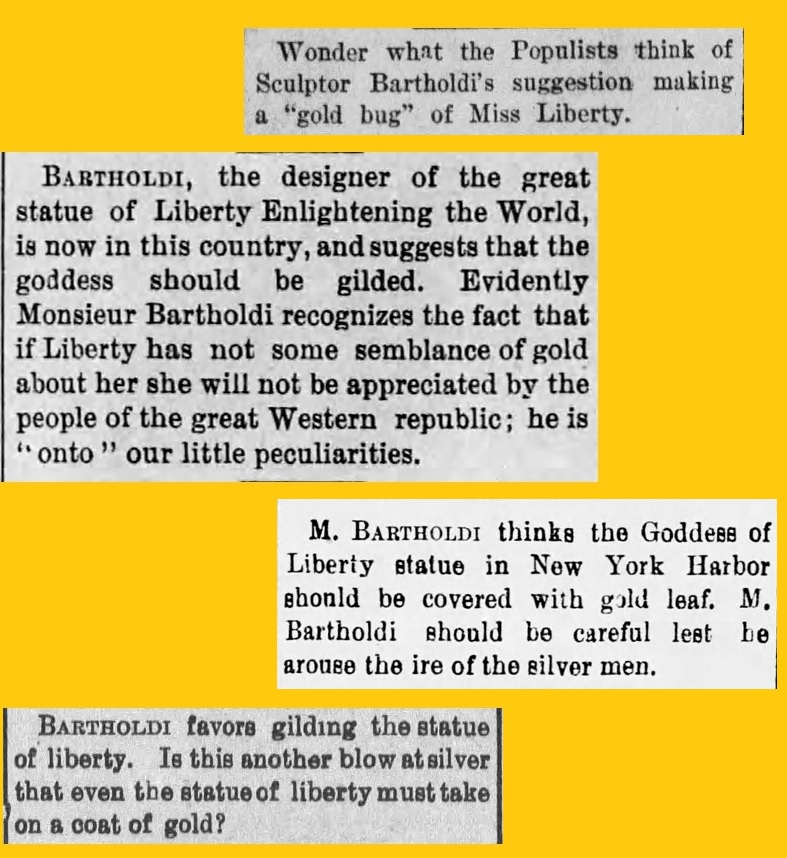
Bartholdi’s proposal to gild the Statue of Liberty earned jabs from newspapers across the country in September 1893. [Images from the Meriden (CT) Daily Republican, Stockton (CA) Evening Mail, Lancaster (PA) News-Journal, and the Topeka (KS) Daily Press.]
“… the somber majesty of the work is in harmony with the hazy obscurity of its surroundings. It imparts a statuesque outline to the other river projections about it. To gild the goddess would not only make a garish creature, but be a very inartistic thing when the river’s juxtaposition is considered.” [“Liberty Statue”] Many pundits were forgetting that the original purpose of the Statue of Liberty was to serve as a lighthouse. Bartholdi’s idea of coating her in gold dated back to just after the 1886 unveiling, when all could plainly see that the copper colossus was ineffective in her intended role. Proposals to improve the external illumination or add internal lights to the torch or diadem faced both technical and financial barriers. Writing to the Lighthouse Board, Bartholdi argued that “… the lighting of the statue by projection appears to me a useless expense, unless some one would afford the luxury of plating the statue with either gold or some shining metal.” [Mitchell 259]
Perhaps Bartholdi renewed his interest in gilding Liberty in 1893 after reading reports of the spectacular golden colossus standing in the Grand Basin at the Chicago Fair?
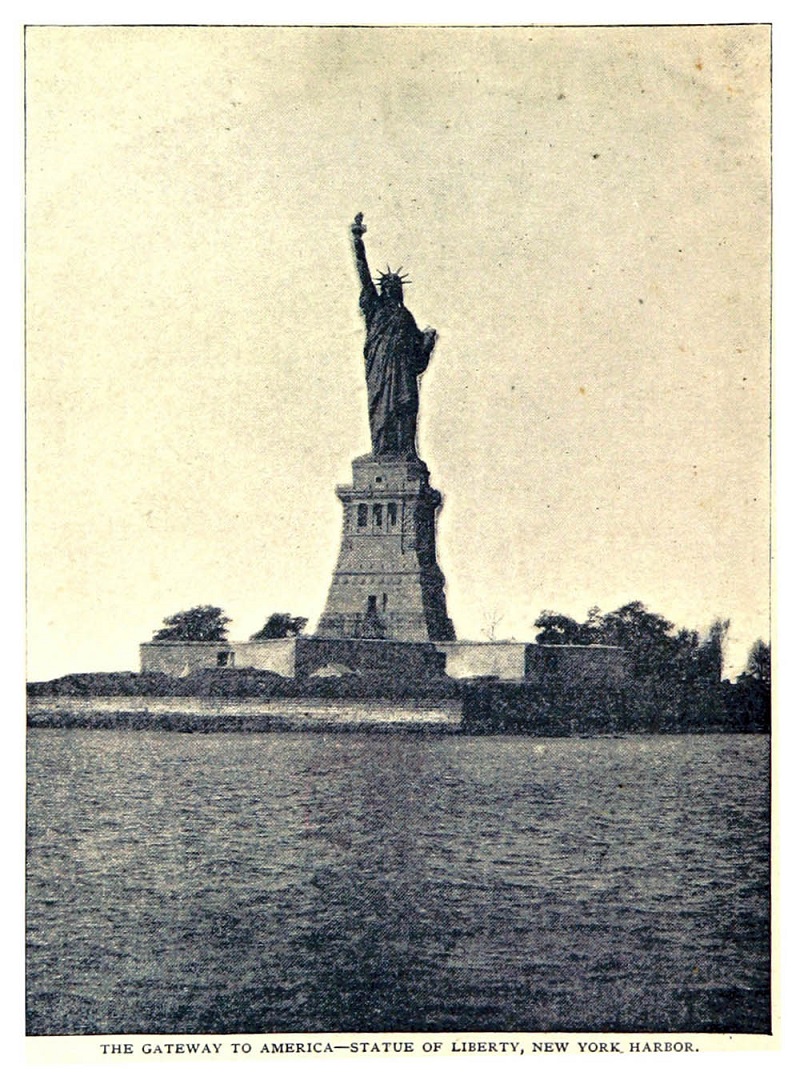
The Statue of Liberty around the time of the 1893 World’s Columbian Exposition. As the “gateway to America,” many foreign visitors saw this statue on their way to the Fair in Chicago. Upon arriving at the Columbian Exposition, they were greeted by her sister colossus, the Statue of the Republic. [Image from Pennsylvania Railroad to the Columbian Exposition (Pennsylvania Railroad Company, 1893).]
Could not restrain his tears
On Tuesday, September 4, Bartholdi inspected his statue from several vistas. He began with views of the statue from the new Mail and Express building on Broadway (between Fulton and Dey Streets) and then from George B. Post’s Western Union Telegraph Building across the street. In the afternoon, Bartholdi sailed over to Bedloe’s Island with Richard Butler, secretary of the Statue of Liberty commission, to examine the structure from every angle. Climbing up to the dizzying height of the torch, Bartholdi looked out upon the city and sea and could not restrain his tears. Bartholdi reported that he was pleased with the condition of the colossus.
Back at the Hotel Martin, the eighty-piece Ninth Regiment Band serenaded Bartholdi with a performance of the “Marseillaise” and “Bartholdi March.” Musical director Giovanni E. Conterno composed the later especially for this occasion; for many years the piece was popular with bands, and Carl Fischer sold sheet music of Conterno’s “Bartholdi March and Two Step.”
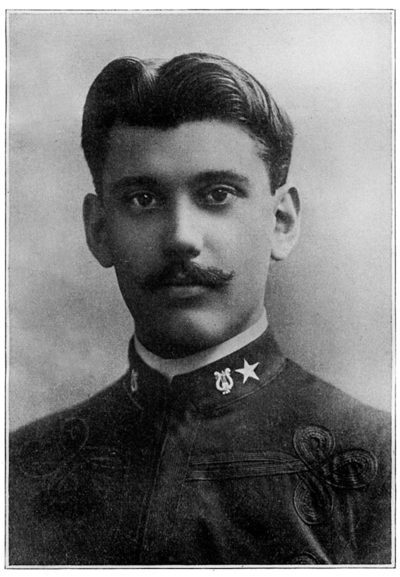
Giovanni E. Conterno, who composed “Bartholdi March” in honor of Frédéric Auguste Bartholdi’s 1893 visit to the United States. [Image from the sheet music for “Kissing” (Luciano Conterno & Sons, 1897) from the Library of Congress.]
An American Pantheon
Back in 1890, Bartholdi had shared with his American ally Richard Butler a proposal to build “a kind of Pantheon for the glories of American Independence.” [Mitchell 263] Upon revisiting the Statue of Liberty three years later, Bartholdi publicly pitched the idea. To start, he wished to have installed at the base of Liberty his Washington and Lafayette sculptural group, currently on exhibit at the World’s Fair in Chicago. Joining them around the centerpiece of Liberty would be a long list of American statesmen and heroes in peace and war.
“The sculptor Bartholdi is here to weep over the grandeur of his colossal statue,” quipped the Boston Globe, “and incidentally, if possible, to sell $200,000 worth more of sculptures to the dear United States. [“The sculptor Bartholdi is here …”]
On Friday, September 8, Bartholdi departed for Chicago. Before leaving New York, he presented a medal from the French Government to his friend Richard Butler. Additional medals would be presented to the other members of the executive committee who had been in charge of erecting the pedestal for the Statue of Liberty.
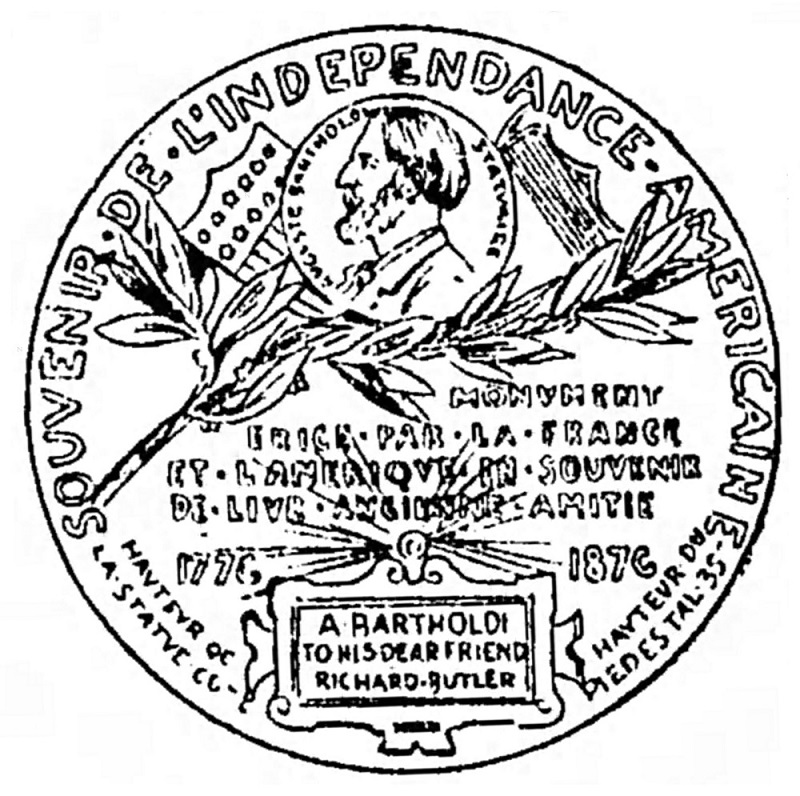
The reverse of the Bartholdi medal, presented by the French Government to members of the Statue of Liberty executive committee in 1893. [Image from the New York World, Sept. 8, 1893.]
SOURCES
“Arrived from Paris” San Francisco Chronicle Sept. 4, 1893, p. 1.
“Bartholdi Compliments Conterno” Brooklyn (NY) Citizen Sept. 9, 1893, p. 3.
“Bartholdi is Here Again” New York World Sept. 4, 1893, p. 5.
“Bartholdis’ Latest Project” Chicago Inter Ocean Sept. 7, 1893, p. 8.
“Bartholdi’s New Idea” Detroit Free Press Sept. 7, 1893, p. 1.
“Bartholdi’s New Project” Kansas City (MO) Star Sept. 6, 1893, p. 3.
“Bartholdi Revisiting” Washington (DC) Evening Star Sept. 4, 1893, p. 4.
“The Bartholdi Souvenirs” New York World Sept. 8, 1893, p. 8.
“Bartholdi Visits His Statue” Carbondale (PA) Evening Herald Sept. 5, 1893, p. 1.
“He Thinks Miss Liberty is Too Dark” New-York Tribune Sept. 4, 1893, p. 7.
Khan, Yasmin Sabina Enlightening the World: The Creation of the Statue of Liberty. Cornell University Press, 2010.
“Liberty Statue” Bucyrus (OH) Evening Telegraph Sept. 16, 1893, p. 4.
“M. Bartholdi Visits His Statue” New-York Tribune Sept. 5, 1893, p. 7.
Mercer, Charles Statue of Liberty. G. P. Putnam’s Sons, 1979.
Mitchell, Elizabeth Liberty’s Torch: The Great Adventure to Build the Statue of Liberty. Atlantic Monthly Press, 2014.
[“The sculptor Bartholdi is here …”] Boston Globe Sept. 6, 1893, p. 20.
“Visitors from France” New York Sun Sept. 4, 1893, p. 5.
“Would Gild the Goddess” Raleigh (NC) News and Observer Sept. 6, 1893, p. 2.

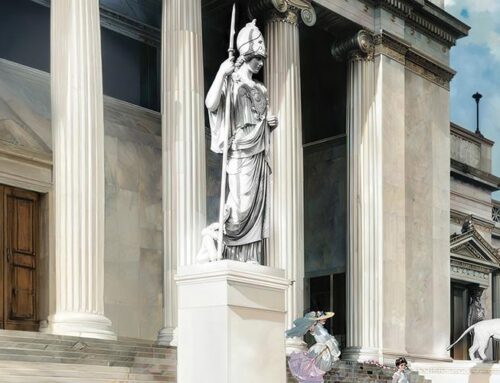
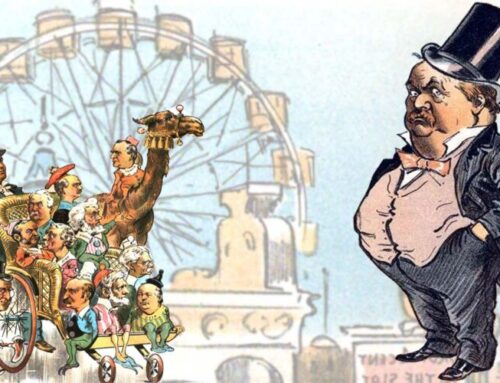
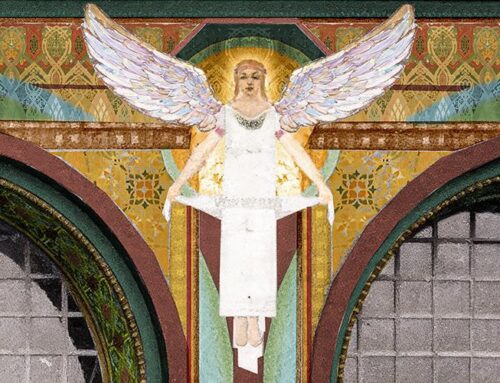
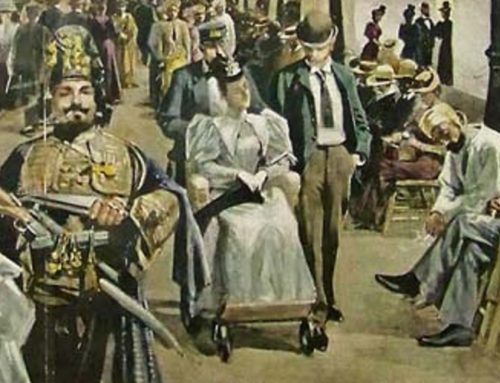

Leave A Comment